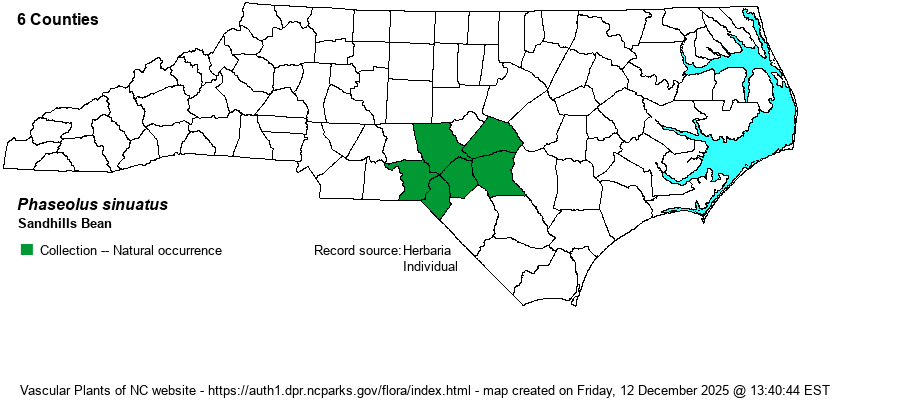| Author | (Nuttall) Torrey & A. Gray | |
| Distribution | Limited strictly to the Sandhills region, where recorded from six counties (lacking in Lee).
This is a species of the inner Coastal Plain, for the most part. It occurs from south-central NC south to southern FL and west to southern MS. BONAP has no map, as it treats this taxon as a part of P. polystachios. | |
| Abundance | Uncommon to rare, though not overly hard to find in well-managed sites such as the Sandhills Game Land and Fort Bragg. Certainly rare now in unprotected or un-burned pinelands. The NCNHP considers it as a Watch List species. | |
| Habitat | This species is restricted to Longleaf Pine (Pinus palustris) sandhills, more frequently found in more loamy/mesic sites than in deeper sands. Where it is found, often a number of other rare or uncommon plant species are present, especially where frequently burned. |
| Phenology | Blooms from July to September, and fruits from August to October. | |
| Identification | This species should be readily identifiable by its odd leaflets. Like P. polystachios, this species is vine-like, trailing on the ground for a length of up to 12-14 feet! The 3 leaflets are oddly shaped; they are "deltoid-ovate", meaning they consist of mostly three rounded lobes or are broadly rounded on three sides, each being about 3 inches long and wide, with a distinct white mottling along the veins. This mottling looks very similar to the pattern as seen on most Hexastylis leaves, enhanced on the Sandhills Bean leaves owing to the dark green color of the leaflets (almost like English Ivy [Hedera helix] leaves). As with P. polystachios, the plant sends up scattered tall and mostly erect flowering stalks up to 6 inches high, with a few scattered rose-pink flowers along the stalk; each flower is about 0.4-inch across. Unlike with the other Phaseolus, this species does not occur in dense patches, but usually is seen as a few stems creeping over the sand or over pine straw. Weakley (2018) notes that the species in leaf can look quite a bit like a Strophostyles species, though those species do not have white mottling along the veins. Encountering this species is infrequent enough that it always causes excitement, even without it being in flower. | |
| Taxonomic Comments | It is bizarre that many authors/websites -- including NatureServe and iNaturalist -- still include this species within P. polystachios as a variety, despite their different leaves and very different habitats. Weakley (2018) and some other authors do seem to be more enlightened, especially as he and they are familiar with both species, which is a partial requisite for considering P. sinuatus as a good species -- as did RAB (1968).
| |
| Other Common Name(s) | Trailing Wild Bean | |
| State Rank | S3 | |
| Global Rank | G5T3? [G3?] | |
| State Status | W1 | |
| US Status | | |
| USACE-agcp | | |
| USACE-emp | | |

